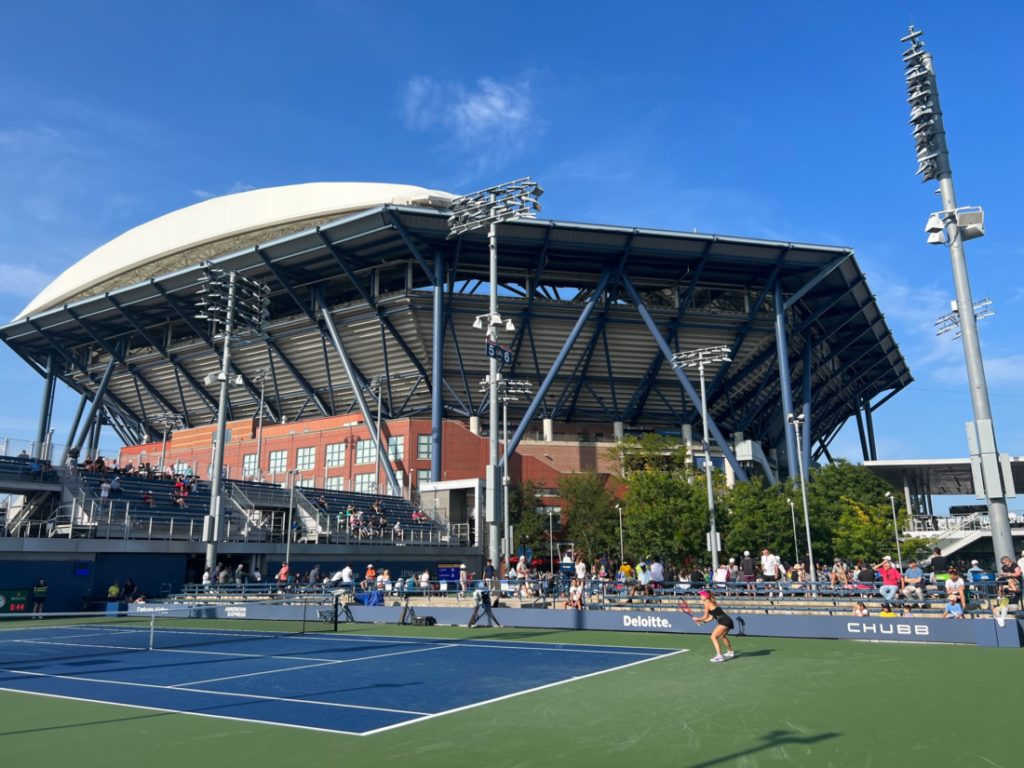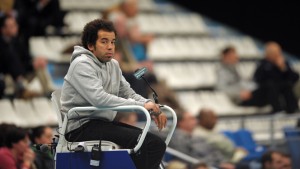By Randy Walker
@TennisPublisher
Is it more exciting to watch a millionaire become a multimillionaire or watch one who is an aspiring millionaire first become one?
Are the personal success stories of business gurus like Mark Zuckerberg or Steve Jobs more interesting when told from their humble beginnings on how they got their start than when they moved from a millionaire to billionaire? This could be an argument or perspective that makes the qualifying rounds of the U.S. Open a sometimes more compelling pre-cursor to the main show.
The U.S. Open qualifying tournament, like at the other three major championships, features 128 men and women playing in 16 “mini-tournaments” each with players winning three matches getting the elite competitive opportunity to play in the main draw of the U.S. Open. Most of the players are playing in the tennis version of the “minor leagues” so the opportunity to make into “The Show” (stealing vernacular from the movie Bull Durham or making it to the major leagues) is, in itself, a career accomplishment.
On my Delta Flight from West Palm Beach, Florida to New York on Tuesday to take in the first day of U.S. Open qualifying, I was reminded of this “rags to riches” storyline in two of the movies that were offered for passenger’s viewing pleasure on the trip. “The Social Network” movie tells the story of the aforementioned Zuckerberg and the beginnings of the Facebook social media platform. The movie showcases the struggle, the beginnings, the breakthrough and goes from his dorm room beginnings to when he first became a millionaire, ending the story there, because is it really that dramatic to see how he went from rich, to mega rich, to one of the richest people in the history of the world? The other movie was “American Underdog” which told the rags to riches story of National Football League quarterfinal Kurt Warner and he struggled and persisted to finally make it in the NFL and go on to win the Super Bowl.
The U.S. Open already had a Cinderella story not unlike Warner when Emma Raducanu became the first player to ever emerge from the qualifying tournament to win a major singles title at the U.S. Open in 2021. While that may never happen ever again, it is inspirational and showcases the thin margins between the main draw players and the player in the qualifying.
You could almost say that every player in the U.S. Open qualifying is their own “tennis start-up” and they are trying to make it big. Each match they win is almost like receiving another round of financing and making to the main draw means you have a successful business. You have some very early stage start-ups like that of 17-year-old Trevor Zvajda from California, who was getting his first baptism in pro tennis at U.S. Open qualifying, but losing to Australian James Duckworth 7-6 (14-12), 6-2. And you have some already successful “tennis entrepreneurs” who are on to new “start-ups” in terms of second careers or rebounding careers, like former Wimbledon and U.S. Open runner-up Kevin Anderson, who is playing this year after “un-retiring” earlier this summer, or former U.S. Open women’s finalist and world No. 2 Vera Zvonereva, who is still plugging away at age 38.
Life on the “main tour” is cushy with better prize money, more luxurious accommodations and the “sunglasses and autograph” lifestyle with all the perks. The players in the qualifying are fighting to be part of that. They want to join the world of the “haves” and not stay in the world of the “have nots.” It’s a fight for survival in the world of pro tennis, not unlike any other movie that has grabbed your attention that has showcased a battle for survival or relevance or justice. That’s the drama. That’s the fight. That’s the storyline that is on display during U.S. Open qualifying. It’s something true sports fans should pay attention to and witness.


